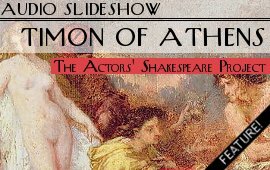 Egyptian art always freaks me out a little. Although I certainly don’t believe aliens built the pyramids, it is so alien, and often so much more unsettling in its abstractions of human form than modern or contemporary art is supposed to be. Those wide dark eyes on the statues and paintings, the lines of sculpture evoking forms of gods from a mythology that’s visually entirely separate from ours, and even though everyone learns about mummies in kindergarten, one is never completely at ease when reading wall-texts about priests pulling brains out of nostrils. Perhaps the oddity de resistance (though not necessarily an art-object) of the MFA’s current exhibition is this mummy head to the left. Not only were its brains removed through its nostrils, but apparently, mummification distorts facial features so much that the priests performing the embalmment ritual must re-shape the eyes, nose, and mouth by hand– even painting on eyebrows. Adding to this wall-text gore, the tomb’s inhabitants, a Governor Djehutynakht and wife, were found in 1915 by a MFA-Harvard archaeological team literally torn to pieces; body parts scattered about the walk-in-closet sized tomb. Grave robbers in search of valuables tucked away between linen mummy wrappings and in nested sarcophagi did not exercise much solemnity in their trade, so much so that scientists do not know to whom this head belongs.
Egyptian art always freaks me out a little. Although I certainly don’t believe aliens built the pyramids, it is so alien, and often so much more unsettling in its abstractions of human form than modern or contemporary art is supposed to be. Those wide dark eyes on the statues and paintings, the lines of sculpture evoking forms of gods from a mythology that’s visually entirely separate from ours, and even though everyone learns about mummies in kindergarten, one is never completely at ease when reading wall-texts about priests pulling brains out of nostrils. Perhaps the oddity de resistance (though not necessarily an art-object) of the MFA’s current exhibition is this mummy head to the left. Not only were its brains removed through its nostrils, but apparently, mummification distorts facial features so much that the priests performing the embalmment ritual must re-shape the eyes, nose, and mouth by hand– even painting on eyebrows. Adding to this wall-text gore, the tomb’s inhabitants, a Governor Djehutynakht and wife, were found in 1915 by a MFA-Harvard archaeological team literally torn to pieces; body parts scattered about the walk-in-closet sized tomb. Grave robbers in search of valuables tucked away between linen mummy wrappings and in nested sarcophagi did not exercise much solemnity in their trade, so much so that scientists do not know to whom this head belongs.
The head is actually billed as something of a medical oddity. It gets it own room, a space meant to simulate the actual dimensions of the tomb, and is the subject of an ongoing forensic investigation closely followed by the local press no doubt in a respectable effort to increase attendance by adding some mystery and a sense of the ongoing to these relics dug out of the MFA’s basement. This CSI-looking display loops on a large television next to the head.
I found this footed (below) interesting; the Egyptian equivalent of a kitschy cookie jar, except for human organs rather than cookies.
Other highlights include a large selection of wonderfully resorted model (pilgrimage, transport, kitchen, funerary, fowling) boats, thousands of lines of hieroglyphs, beautifully intact cedar coffins, and impressive efforts to translate these artifacts (and the archaeology itself) into a historical narrative and impart a sense of history (as well as historical distance, this stuff is over 4000 years old) without being dry.
Downstairs in the contemporary art gallery is , an assortment of artworks relating to the song, from Stuart Davis’ masterpiece (1940) to Candice Breitz’s video installation Queen: A Portrait of Madonna (below, wall-text here). This massive video installation loops YouTube-like karaoke videos of thirty individuals singing Madonna’s in its entirety. I was actually forced out of the gallery by a muddled rendition of Like a Prayer, though I stayed just long enough to record this clip. The video wall actually inspired a, if you can believe it, in July with MC Malcolm Rogers. Of course, video art is no stranger to camp or activities much more pedestrian than karaoke (and I suppose nothing is more pedestrian than being buried), but they at least need to turn the volume down on this thing, because whatever conceptual message it’s itching to convey about the consumption of global pop culture is clouded by Madonna nostalgia, a cheap effort to reach out to younger patrons (that looks like it would have benefited from some jello shots or something), and YouTube voyeurism–that for most seems to trump actual engagement or aesthetic experience. Regardless, the Davis should get a sound-proof room for this exhibition.






Update:
Surprisingly enough, the MFA is not the only art space in Boston where you can hear Like a Prayer . , currently on at Harvard’s Carpenter Center features the movie Like a Prayer: Stop the Church (1990), which documents protests against the Catholic Church for their stance on homosexuality, abortion, contraceptives, and sex-education, with Madonna sometimes singing in the background. It was produced by , the Damned Interfering Video Activists; an organization of videographers associated with the ACT UP movement which document protests and direct actions, even producing a weekly public access TV show from 1991-1996.
In a gallery filled with late 80s, early 90s posters and t-shirts and videos the song fits.
ACT UP New York: Activism, Art, and the AIDS Crisis, 1987–1993
October 15—December 23, 2009
Carpenter Center for the Visual Arts, 24 Quincy Street, Cambridge
Free admission, open to the public